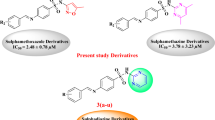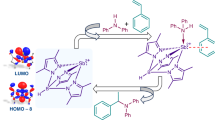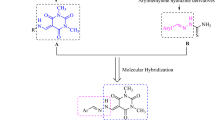Abstract
UREA STIBAMINE, introduced by Brahmachari1 in 1922 and widely employed in the treatment of kalaazar in India and elsewhere, still remains a compound with no definitely known and agreed chemical formula. It was originally reported to be a substance composed of urea and para-aminophenylstibinic acid with the empirical formula, C7H12O4N3Sb. Later it was suggested that the compound was identical with ammonium-para-carbamidophenylstibinate, NH2.CO. NH.C6H4.SbO(OH).ONH42. Ghosh et al.3 and Gray et al.4 gave definite evidence that urea stibamine was not a single substance of definite composition and the latter group of workers showed that the 'effective active principle' was a di-substituted urea, S-diphenyl-carbamide-4 : 4 distibinic acid. The antimony content of various commercial samples was shown by Ghosh et al. to vary between 20 and 43 per cent, while Gray et al. reported a comparatively smaller range of variation in antimony content from 44.19 to 48.6 per cent. Brahmachari5 appeared to have accepted the results of Gray et al. in this regard, and emphasized that the divergent results obtained by different investigators were due to different brands of “so-called urea stibamine”, not conforming to his original specifications, being put on the Indian market.
This is a preview of subscription content, access via your institution
Access options
Subscribe to this journal
Receive 51 print issues and online access
$199.00 per year
only $3.90 per issue
Buy this article
- Purchase on SpringerLink
- Instant access to full article PDF
Prices may be subject to local taxes which are calculated during checkout
Similar content being viewed by others
References
Brahmachari, Ind. J. Med. Res., 10, 492 (1922).
Niyogi, J. Ind. Ckem. Soc., 5, 753 (1928).
Ghosh et al., Ind. J. Med. Res., 16, 461 (1928).
Gray et al., Proc. Roy. Soc., B, 108, 54 (1931).
Brahmachari, NATURE, 145, 1021 (1940); 145, 546 (1940).
Ghosh, Ind. J. Med. Res., 16, 457 (1928).
Burn, "Biological Standardization", 252 (1937).
Napier, "Kala-azar", 2nd Edit. (London, 1927).
Author information
Authors and Affiliations
Rights and permissions
About this article
Cite this article
GUHA, R., DUTTA, N. & MUKERJI, B. Antimony Content and Toxicity of Urea Stibamine. Nature 151, 108–109 (1943). https://doi.org/10.1038/151108a0
Issue date:
DOI: https://doi.org/10.1038/151108a0
This article is cited by
-
The race to discover the insect vector of kala-azar: a great saga of tropical medicine 1903–1942
Bulletin de la Société de pathologie exotique (2013)



